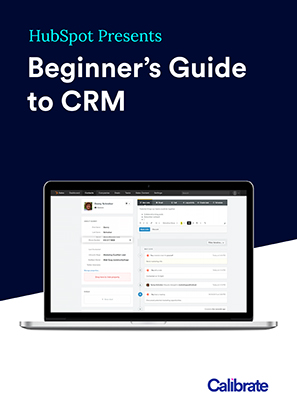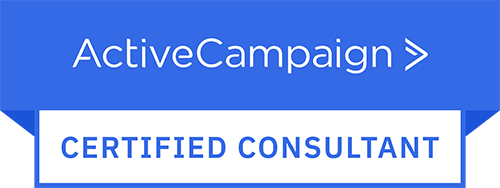Last year Smart Insights predicted that integrating personalisation into the buyers' journey would be a growing trend in 2018 and they weren’t wrong.
Drip.com recently held their two-day automation conference where 14 e-commerce masterminds discussed areas for big growth. Brennan Dunn’s talk ‘5 Personalisation Strategies that Work’ featured as one of their top talks so we thought we’d put together some key takeaways for you.
Personalisation goes beyond just inserting merge tags such as *|FNAME|* into the heading/subject line of an email. Personalisation is about providing users with the information they want and need while providing an engaging experience. Each time you communicate with users you want them to have a very individualised, very relevant and niche experience.
In this 45min talk, speaker Brennan Dunn, founder and CEO of RightMessage, a company who works alongside email marketing apps and CRM platforms to personalise content, call-to-actions and testimonials, covers 5 personalisation strategies to help you engage your audience on a new level. Below are the five strategies Brennan covers in this talk.
1. Ask the question, where did someone come from, and what does that tell us?
2. Ask the question, what are people searching for?
3. One ad = One landing page
4. Ask people what they want from you.
5. Tell me what to do next
If you’re interested in listening to his full talk, you can find it here.
So what are our key takeaways?
Segmentation is the root of all things personalisation.
To use personalisation effectively you need to know what segments your users fall in to; if you don’t know what segment a user belongs to, you can’t personalise your communication to them. Ask the question “what are they searching for when they visit my site?” Analyse their onsite behaviour by looking at pages they’ve visited, pages they haven’t visited, what kind of content they’re consuming, what blog pages are they returning to? Profile your users. You can also segment users further by using optin form questions, trigger links, and progressive profiling through assessments and quizzes.
You also have to ask the question, what they might want from you? As an example, in his talk, Brennan says to “look at things like have they bought this already and have they done something like binge read my articles on pricing? That makes it pretty obvious that I should probably pitch them on our pricing course.”
You want end-to-end connection with the user
Continue the conversation from the first touch point to the second and so on and so on. This falls under the one ad = one landing page strategy.
Make sure that every version of your ads on Facebook and Google etc has a corresponding landing page that mirrors the same copy and reflects the original search or ad intent. As Brennan states “the landing page that you drive traffic to from your ads better reiterate that ad and provide a kind of continuous experience”. This tactic is also helpful for segmenting leads. The language, the headlines copy and everything else on the landing page tailors itself based on who clicked on the ad; “if we’re running a certain ad that says a certain thing targeting a certain type of person, they’re self-segmenting by clicking that ad” (see time: 25:06)
As an example of one ad = one landing page Brennan refers to a company who created 300 versions of an ad with 300 corresponding landing pages. This company saw a 300% increase in leads starting a free trial. Because the language and the things they promoted reflected the copy and the audience that was being targeted with the specific ad, they were able to create a more personalised and relevant experience for the user.
It’s not all or nothing
Start small. You don’t have to redesign your whole website to account for personalisation, instead just start with one little thing. Stacking a lot of small personalisation tweaks together can add up to big results. In this talk, Brennan uses one of his own customers as an example. His customer changed only their navigation links based on where somebody was in their funnel. An anonymous visitor sees one navigation while subscribers see a different navigation and then customers see a different navigation again. The results? They were able to get 55% more subscribers to go to their sign up page. By changing the navigation links for different users they eliminated unnecessary and irrelevant distractions.
Below are some personalisation tactics from Brennan’s talk you can try right now:
Use liquid/merge tagging
Perhaps one of the most well known forms of personalisation, merge tagging allows you to change, swap out, and dynamically display personalised data into emails. eg. name, business name/type, any other general contact info, how do they describe themselves in the singular or the plural? This is a tactic you can implement straight away if you have the right subscriber data. See MailChimp’s merge tag cheat sheet which outlines all of the merge tags available to MailChimp accounts.
Map out segmentation workflows
By mapping out your workflow you can create custom fields for emails to different segments of your subscribers.
Use your Google Analytics Account
Take a close look at what sites/pages are consistently sending traffic your way. Once you’ve found out this information you can change the way you speak to that incoming traffic based on what you’re able to assume about them. For example, what kind of content drew them to your website/landing page? A great way to find out this information is to look at your referral logs in GA.
Personalise your landing pages for the different types of audiences who will visit the page.
You can use individual URLs for specific referral links or you can build a landing page that displays dynamic content to different segments.
Create dynamic CTA’s
This is a more advanced personalisation technique(See time: 19:40). Brennan puts it like this; “If you come from a web design blog that has linked to my website blog page and I see that you’re reading all blogs relating to proposal writing then you’re going to be seeing a personalised CTA specifically related to proposal writing….”
Look into different platforms
A platform Brennan specifically talks about is Clearbit. “Clearbit takes an email address of a new subscriber, and finds out the company they work for, the number of social media followers, where they’re located, the technology they use, the sector or the industry that they belong to and then it can then enrich that trip subscriber with that data”. This kind of information is valuable especially if you want to communicate to specific people in specific industries.
So what happens when you start incorporating personalisation into your digital marketing? The performance of your emails and website will improve because you are creating a more relevant and personal experience for your users. You’ll see more leads, more conversions, and more sales. If you missed our blog, 5 Things Shoppers Really Want From Personalised Communications, read it here to find out how you can further personalise your communication with your customers.
The marketing landscape is constantly changing. Where your customers are found today, may not be where they are found tomorrow. At Calibrate we consider how best to attract, engage, convert, close and delight your customers. Get in touch today if you need help to develop and evolve your marketing activities.

If your business isn't yet using a CRM system to manage your contacts, this guide will be the perfect introduction to why you should. A CRM can save time, improve productivity and ultimately drive better business outcomes.


